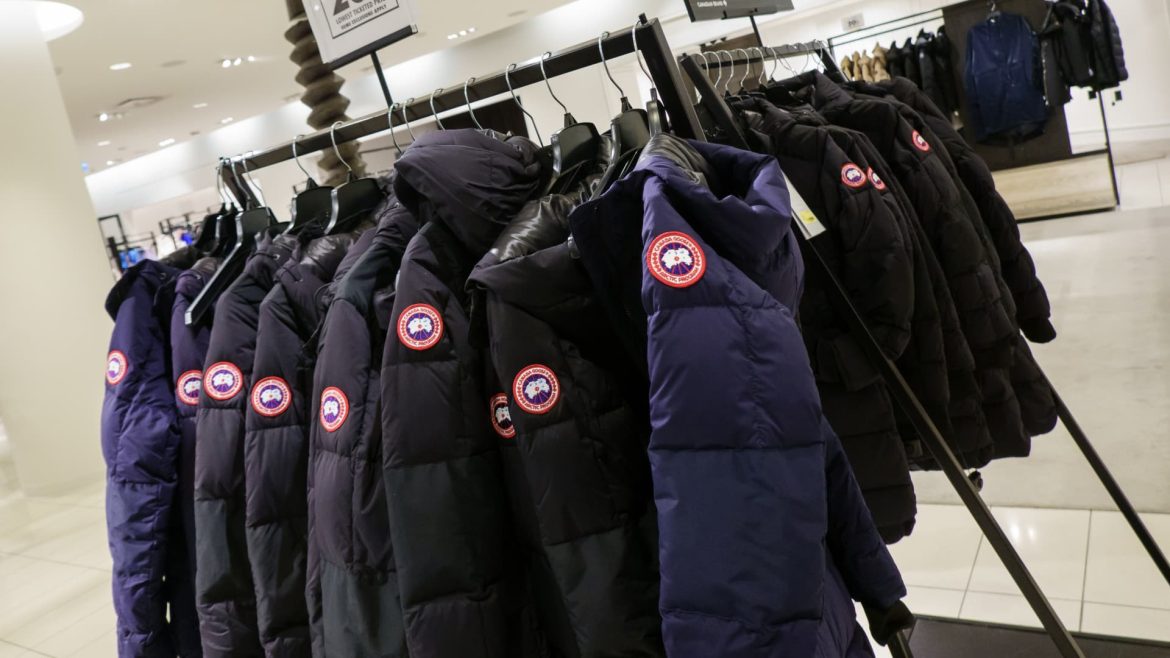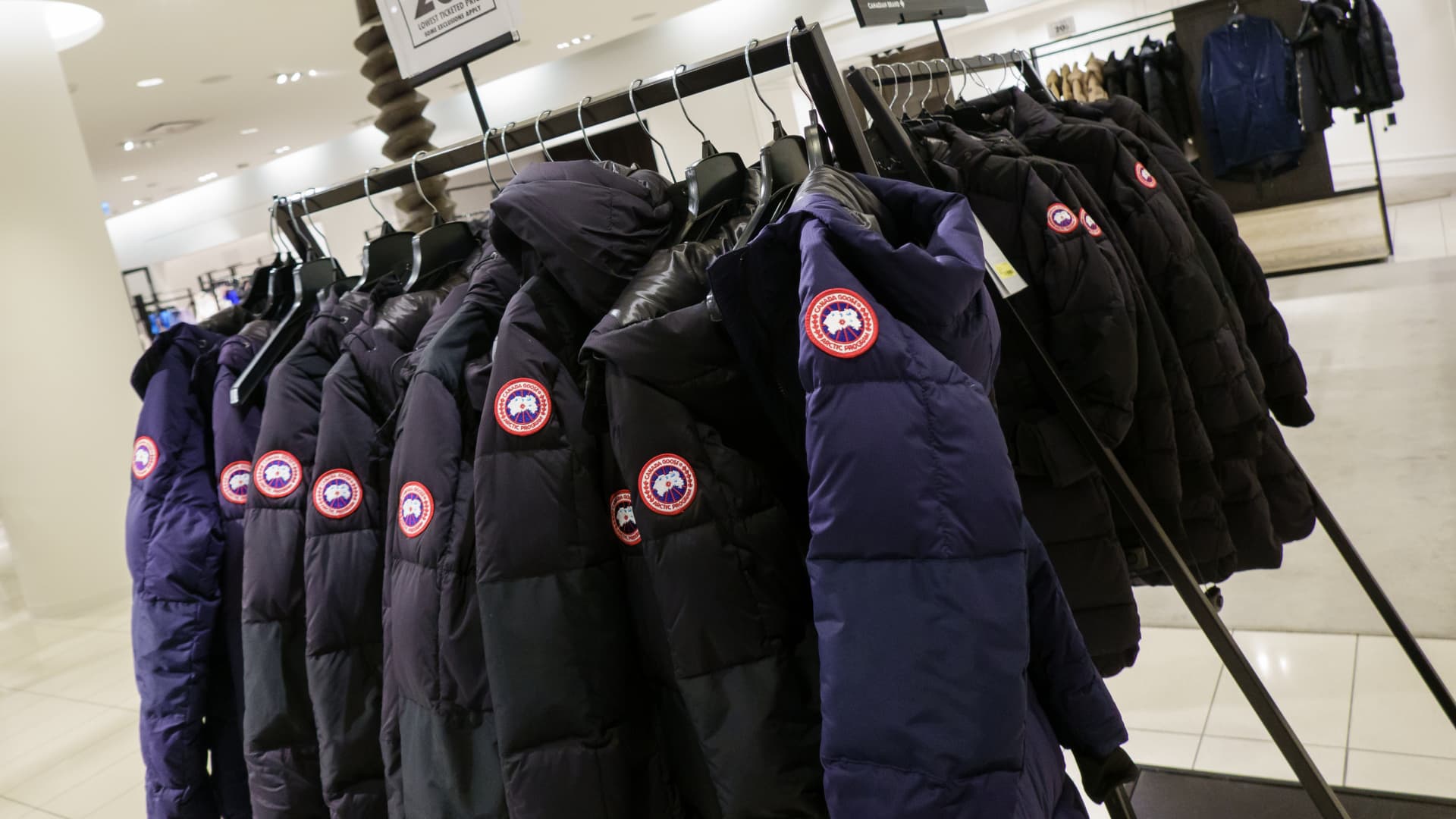Canada Goose’s recent financial performance and outlook reveal a nuanced story of growth amid challenges, driven largely by robust demand in China and disciplined cost management, yet tempered by macroeconomic uncertainties and global disruptions.
Strong Quarterly Results Amid Complex Global Environment
Canada Goose posted a surprise quarterly profit that exceeded analysts’ expectations, with a notable increase in revenue by approximately 7% year-over-year to around CAD 384.6 million in the fourth quarter of fiscal 2025. This strong showing was anchored by resilient demand, particularly in China, alongside stringent cost controls that boosted profitability.
The company’s adjusted EBIT stood at CAD 59.7 million, while net income reached CAD 27.7 million for the quarter, underscoring effective operational and financial management despite a complex macroeconomic backdrop.
Shares responded positively, jumping nearly 8% after the earnings release, reflecting investor confidence in the company’s capacity to outperform expectations even amidst prevailing economic challenges.
Highlight on China: A Key Growth Driver
The resilience of Canada Goose’s luxury parkas in China emerged as a pivotal factor contributing to the company’s strong quarterly results. Steady demand in this market highlights the brand’s successful positioning and appeal in a key luxury consumer base.
This contrasts with past pressures from COVID-19 restrictions and related disruptions in China that had previously hindered growth projections and led to cautious guidance revisions. The current performance signals a recovery phase and strengthened foothold in the Chinese luxury market, a critical driver for global expansion.
Macroeconomic Uncertainty and Guidance Withdrawal
Despite beating earnings and revenue forecasts, Canada Goose chose to withhold its fiscal 2026 guidance, citing significant macroeconomic uncertainties. This cautious stance stems from unpredictable global factors such as ongoing tariff disputes, inflationary pressures, and uncertain consumer confidence, which continue to impact visibility into the company’s future sales dynamics.
The company’s earlier lowered full-year forecasts, prompted by unseasonably warm weather affecting demand seasonality and geopolitical tensions, demonstrate responsiveness to a volatile external environment. With global economic conditions demonstrating a challenging landscape, Canada Goose’s decision to pull guidance reflects prudence in financial communication amid unforeseen risks.
Operational Highlights: Controlled Inventory and Debt Reduction
Canada Goose’s disciplined approach extended beyond sales growth to inventory management and financial structure. Inventory levels declined by approximately 9% year-over-year to CAD 473.4 million, suggesting more efficient stock control aligned with sales trends, minimizing excess inventory risks.
Additionally, net debt was reduced to around CAD 826.4 million, showcasing a focus on strengthening the balance sheet and enhancing financial flexibility to weather fluctuating market conditions and invest strategically.
Strategic Initiatives and Brand Strength
The company attributed strong Q4 results to a combination of strategic retail expansion, direct-to-consumer (DTC) gains, and brand elevation efforts. CEO Dani Reiss emphasized that the synergy of brand connection and strategic execution is instrumental in driving financial performance.
Expanding DTC channels and strengthening omnichannel capabilities have positioned Canada Goose to better control customer experience and margins, offsetting some wholesale volatility. This approach is pivotal for adapting to evolving consumer preferences in luxury retail.
Challenges and a Cautious Outlook
While recent sales and profits have exceeded estimates, Canada Goose faces ongoing headwinds, including:
– Global tariff uncertainty: The ambiguity caused by trade policies, including lingering impacts from U.S. tariffs, inhibits long-term forecasting clarity.
– China-related risks: Despite current momentum, residual risks from COVID-19 related disruptions and economic reforms in China maintain some unpredictability.
– Demand variability: Seasonal weather fluctuations and potential softening in global luxury spending due to inflation and interest rates contribute to cautious demand outlooks.
– Reduced visibility: Rising global geopolitical tensions and economic volatility warrant a guarded approach to fiscal forecasting.
These factors collectively led the company to moderate its enthusiasm on forward guidance despite current strong operating metrics.
Conclusion: Navigating Growth Through Uncertainty
Canada Goose’s fiscal results for the fourth quarter and full year 2025 illustrate a company that has effectively capitalized on growth opportunities, particularly in China, and maintained a disciplined focus on cost and inventory management. Its success in surpassing analyst expectations reinforces the strength and resilience of its luxury brand and operational execution.
However, the withdrawal of forward guidance and references to macroeconomic uncertainty signal a prudent recognition of the volatile landscape, encompassing tariff risks, geopolitical complexity, and fluctuating consumer sentiment. How Canada Goose balances aggressive growth strategies with cautious financial stewardship will be critical as it navigates through 2026 and beyond.
In essence, Canada Goose currently embodies the duality faced by many global luxury retailers: promising demand pockets and operational strength against a backdrop of unpredictable and rapidly changing economic circumstances. This dynamic sets the stage for continued vigilance, strategic agility, and a compelling, if cautious, growth journey ahead.





